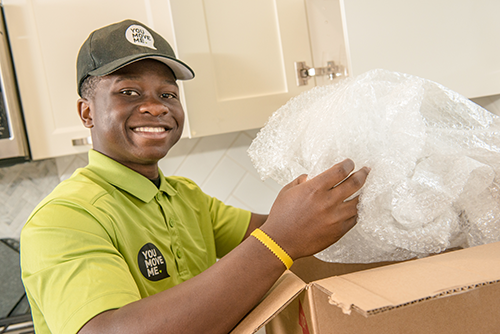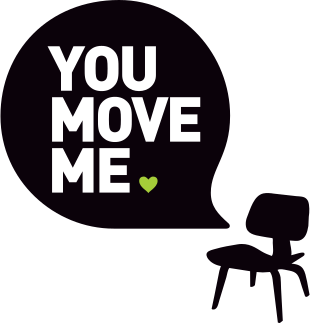Four Easy Tips for Packing Fragile Items


Ever since I moved houses and broke a beautiful antique wash basin, I’ve become a patient person – when it comes to moving! It was a lovely Delft Blue basin that had been in my family for years, and I eventually tired of looking at that sad, grey-gluey scar running the length of that gorgeous porcelain, and had to dispose of the piece. Preventing these moving tragedies is really just a matter of adequate preparation and having the right tools.
Here are our easy tips to pack up your fragile items and keep them safe:
1. Prepare in advance. Packing up valuable crystal, porcelain and other breakables requires some time. This is not the place to rush. If you are not hiring movers, start well in advance of moving day and take the time to properly pack these items and decide if they’ll go in the moving truck or by car.
2. Have the right tools. Here’s what you need: quality moving boxes in various sizes; packing paper, bubble wrap, pliable cardboard, scissors, and packing tape. A large table to lay out your items and pack on is also an essential tool. For larger items, you might need an extra pair of hands.
3. Label it! Having the boxes with your delicate items clearly labelled as “fragile” will help your movers handle them more carefully, as well as help when unpacking and organizing at your new place.
4. Know what items you will be packing and how to pack them properly. A flat-screen TV and your grandma’s china are both fragile items, but quite different when it comes to packing. Do your research on the best way to pack each item, and plan in advance so you’re not caught short of bubble wrap on moving day.
How to pack the most popular fragile items:
Plates – plates should be packed vertically in small to medium boxes lined with crumpled packing paper on the bottom and top. Wrap each plate in bubble wrap and secure with tape. Place paper in between the standing plates. Do not overpack the box. You Move Me has dish packs available for purchase, whether hiring our packing service or doing it yourself.

Glasses – wrap glasses individually with packing paper and place crumpled paper inside the large pieces to diminish empty space. Line small or medium boxes with ample packing paper, top and bottom. Layer spaces around glasses with paper as well, reducing as much as possible the chance of the items moving inside the box. Place the heaviest items on the bottom of the box, with lighter pieces on top.

Lamps – lamp shades should be boxed (flat side down) separately with lots of paper. Bases can be placed in a large box if necessary and bubble wrap used where appropriate.

Pictures/Frames – picture frames should be placed in paper lined small to medium boxes, and standing if larger than 8 inches, with crumpled paper in between each piece. Wrap frames in packing paper. Top frames with more packing paper to ensure items don’t move around in the box. When moving paintings and pictures that are over 3 feet in size, they should be secured with a moving blanket, plastic wrapped, and moved separately.

TVs – flat-screen TVs can be tricky to pack. Start by removing any cables and accessories (such as the stand legs), and make sure to pack those in a clearly labelled box. Wrap the screen in a soft moving blanket, securing it all around the device with packing tape. Lastly, place it inside the box, and close it with tape. Make sure that the box is the correct size for your TV.
Specialty items – here is the way I should have packed my family’s antique wash basin, and this can be applied to all oddly-shaped, large fragile items. It’s important to consider the shape and size of the piece, as well as any handles or protruding pieces that could break easily. Wrap the piece completely in bubble wrap, securing with tape. Place it on one piece of pliable cut cardboard. Place an identical piece of cardboard on top of the item. Then bend the cardboard ends to meet and secure with tape.
Don’t be shy with the tape. Wrap the entire piece with tape if necessary. You want the fragile item snug and stable. Then place the piece in a paper lined box that’s roughly the same size as the object, placing crumpled paper in any gaps. Lastly tape up the box securely and mark in bold felt marker: FRAGILE.

Many people use old towels, small blankets, newsprint, or even paper towels to wrap their fragile items. These are not wise choices. Newsprint can be dirty and means you have even more washing to do in your new home. Paper towels are not strong or reliable. Old towels slip easy and cannot be secured with tape, which is essential for proper packing of valuables. Please invest in the proper tools and you won’t be sorry.

Finally, be sure to let your movers know which boxes contain fragile items. Most moving companies carry specialized boxes for fragile items, such as the dish packs and mirror/picture frame packs that You Move Me keeps in stock.
If you are at all unsure about your packing skill, ask for help. You Move Me offers professional packing services. Contact your local movers today to request an estimate.
Happy Moving!

